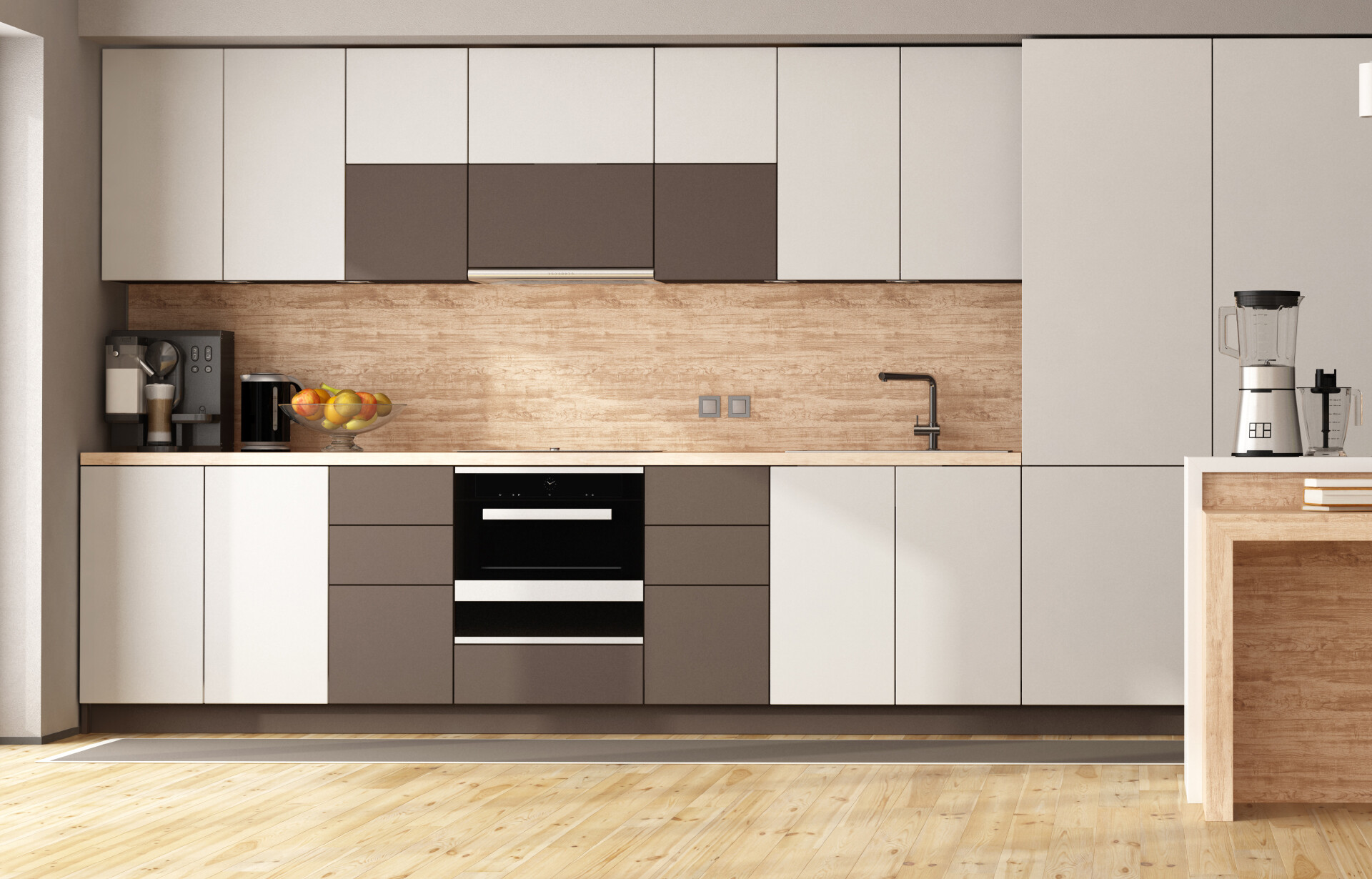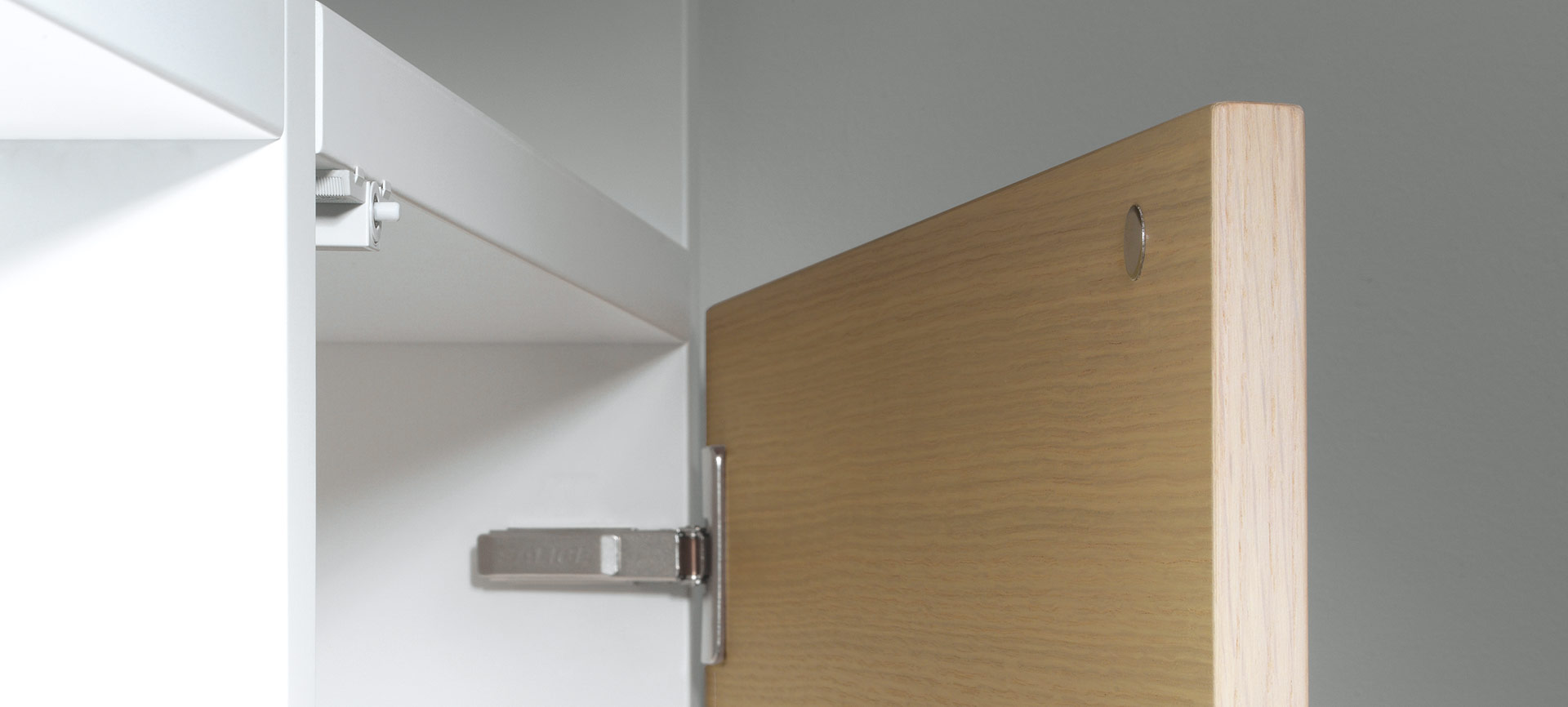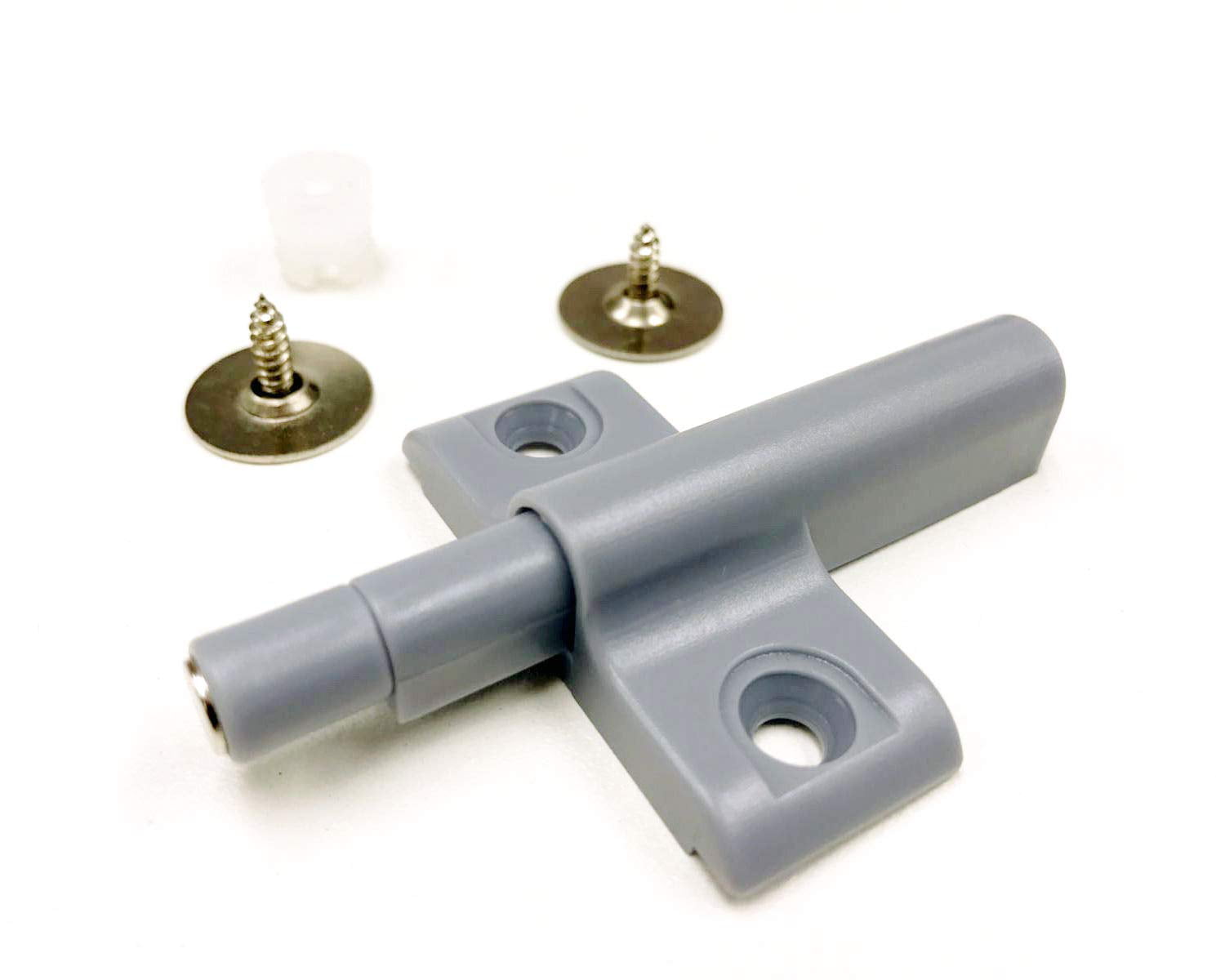Understanding Push to Release Cabinet Door Latches

Push-to-release cabinet door latches offer a sleek, modern alternative to traditional knobs and handles, providing a clean aesthetic and convenient operation. These latches are increasingly popular in various applications, from kitchen cabinets to office furniture, due to their ease of use and space-saving design. Understanding their mechanics and variations is key to selecting the right latch for a specific application.
Push-to-Release Latch Mechanisms, Push to release cabinet door latch
Push-to-release latches utilize a variety of mechanisms to achieve their function. A common design incorporates a spring-loaded plunger or button that, when depressed, releases a catch mechanism holding the door closed. Other designs might use a magnetic latch, where a magnet holds the door closed until a push releases the magnetic force. Some more complex latches might combine these mechanisms for added security or functionality, such as incorporating a locking mechanism triggered by a separate key or button. The simplicity of the design is often the most significant factor determining the overall robustness and longevity of the latch.
Comparative Analysis of Push-to-Release Latch Designs
Different designs offer varying strengths and weaknesses. Spring-loaded plungers are generally inexpensive and reliable, but they can be prone to wear and tear over time, especially with frequent use. Magnetic latches offer a quieter and smoother operation, but they might be less secure and susceptible to interference from external magnetic fields. Latches with integrated locking mechanisms offer superior security, but this comes at the cost of increased complexity and price. The choice often depends on the specific needs of the application and the desired level of security and durability.
Materials Used in Push-to-Release Latches
The materials used significantly impact the latch’s durability and aesthetics. Common materials include zinc alloy, steel, and plastic. Zinc alloy offers a good balance of strength, durability, and cost-effectiveness, often with a polished or powder-coated finish for enhanced aesthetics. Steel latches provide superior strength and durability but can be more expensive and heavier. Plastic latches are lightweight and inexpensive, but they are generally less durable and might not be suitable for high-traffic applications. The material choice is often a compromise between cost, durability, and aesthetic appeal.
Comparison of Push-to-Release Cabinet Door Latches
The following table compares four different push-to-release cabinet door latches, highlighting their key features, materials, and typical applications.
| Latch Type | Material | Features | Typical Applications |
|---|---|---|---|
| Spring-Loaded Plunger | Zinc Alloy | Easy installation, cost-effective, reliable | Kitchen cabinets, bathroom vanities |
| Magnetic Latch | Steel and Neodymium Magnet | Quiet operation, sleek design, moderate holding strength | Office furniture, media cabinets |
| Concealed Push-to-Open Latch | Zinc Alloy | Clean aesthetic, integrated into door design | High-end furniture, custom cabinetry |
| Push-to-Release with Locking Mechanism | Steel and Zinc Alloy | Enhanced security, key or button operated lock | Medicine cabinets, valuable storage |
Installation and Application of Push to Release Latches

Push-to-release latches offer a sleek, modern solution for securing cabinet doors and drawers, providing a clean aesthetic and convenient functionality. Their installation, while seemingly simple, requires precision to ensure smooth operation and longevity. Understanding the various applications and best practices will help you choose and install the right latch for your project.
Installing a Push-to-Release Latch: A Step-by-Step Guide
Proper installation is key to the smooth and reliable operation of a push-to-release latch. Following these steps will ensure a professional-looking and functional result.
- Planning and Measurement: Before beginning, carefully measure the door and cabinet frame to determine the appropriate latch placement. Ensure sufficient clearance for the latch mechanism to operate freely. Consider the thickness of the door and frame to select a latch with the correct mounting depth. Visualize the latch mechanism fully extended and retracted to avoid interference with other components.
- Drilling Pilot Holes: Using a drill bit slightly smaller than the latch’s mounting screws, drill pilot holes in both the door and the frame. Precisely aligning these holes is crucial for a flush and secure fit. Pre-drilling prevents wood splitting and ensures a clean installation. Consider using a depth stop on your drill bit to maintain consistent hole depth.
- Latch Installation: Carefully insert the latch mechanism into the pre-drilled holes. Ensure the latch is correctly oriented before tightening the screws. Use a screwdriver that matches the screw head type to avoid damaging the screws or the latch. Tighten the screws gradually and evenly to prevent stripping the wood.
- Testing and Adjustment: Once installed, test the latch’s functionality. The door should close securely and release easily with a gentle push. If the latch is difficult to operate or the door doesn’t close flush, slightly loosen the screws and readjust the latch’s position. Re-tighten the screws once the optimal position is achieved. A slight adjustment may be necessary to ensure perfect alignment.
Imagine installing a latch on a kitchen cabinet door. The image shows the latch mechanism being carefully inserted into the pre-drilled holes, with the screws being tightened to secure it firmly in place. The precise alignment of the holes ensures a flush fit, enhancing the overall aesthetics of the cabinet.
Applications of Push-to-Release Latches
Push-to-release latches find diverse applications across various furniture and cabinet types, each latch design offering specific advantages depending on the application.
- Kitchen Cabinets: These latches are ideal for sleek, modern kitchen designs, offering a clean look and easy access to contents. They’re particularly suitable for frameless cabinets where traditional hinges might interfere with the latch mechanism.
- Bathroom Cabinets: In bathrooms, these latches provide a secure and water-resistant closure, protecting toiletries and preventing accidental opening. Choosing a latch with a durable finish is crucial in this high-humidity environment.
- Office Furniture: Push-to-release latches can be used in filing cabinets, desk drawers, and other office furniture to provide a secure yet easily accessible storage solution. Their low-profile design maintains a clean aesthetic.
- Media Cabinets: In media cabinets, these latches help keep electronics and accessories secure while maintaining a sleek look. Choosing a latch that is resistant to vibrations from audio equipment is important.
Best Practices for Latch Longevity
Regular maintenance and proper use contribute significantly to the longevity of push-to-release latches.
- Avoid Excessive Force: Pushing too hard on the latch mechanism can cause damage over time. A gentle push is usually sufficient for release.
- Regular Cleaning: Periodically clean the latch mechanism to remove dust and debris that can hinder its operation. A soft cloth and mild detergent are usually sufficient.
- Lubrication: If the latch becomes stiff or difficult to operate, apply a small amount of silicone-based lubricant to the moving parts. This will help to reduce friction and ensure smooth operation.
- Proper Adjustment: If the latch becomes misaligned or starts to malfunction, adjust it as described in the installation steps. This will help to maintain proper functionality.
Troubleshooting and Maintenance: Push To Release Cabinet Door Latch

Push-to-release cabinet latches, while convenient, can sometimes present minor issues. Understanding common problems and their solutions can save you time and frustration, ensuring your cabinets remain smoothly operational. This section details troubleshooting steps and maintenance tips to keep your latches in top shape.
Common Latch Problems and Solutions
Several factors can lead to malfunctioning push-to-release latches. These problems are usually easily addressed with simple fixes.
- Latch Doesn’t Release: This is often due to debris or misalignment. Carefully inspect the latch mechanism for obstructions. Gently clean any visible dirt or dust using a compressed air canister or a small brush. If the problem persists, check the alignment of the latch and door. Slight adjustments to the door or the latch itself might be necessary to restore proper functionality.
- Latch Releases Too Easily: The latch mechanism may be too loose. Most latches have an adjustment screw that controls the tension. Carefully tighten this screw, testing the latch’s release after each small adjustment until the desired firmness is achieved. Be cautious not to overtighten, which could damage the latch.
- Latch is Loose or Wobbly: Over time, the screws holding the latch in place may loosen. Tighten these screws using a suitable screwdriver. If the screws are stripped, you might need to replace them with slightly larger screws or use wood glue to reinforce the hold.
- Latch Breaks: Excessive force or a manufacturing defect can cause the latch to break. Unfortunately, a broken latch usually requires replacement. Select a replacement latch with similar dimensions and specifications to ensure a proper fit.
Troubleshooting a Malfunctioning Latch
A systematic approach to troubleshooting is key to identifying the source of the problem.
- Visual Inspection: Begin by carefully examining the latch and surrounding area. Look for any obvious signs of damage, such as broken parts, misalignment, or obstructions.
- Functionality Test: Try operating the latch multiple times, paying close attention to how it feels and sounds. Note any unusual resistance, noises, or inconsistencies in its operation. This can help pinpoint the problem area.
- Component Check: If the visual inspection and functionality test don’t reveal the problem, carefully examine the individual components of the latch. This might involve disassembling the latch (if possible and you are comfortable doing so), to check for broken springs, worn-out parts, or other internal issues.
- Alignment Check: Ensure the latch is correctly aligned with its corresponding receiver. Even a slight misalignment can prevent the latch from functioning properly.
Maintenance Tips for Extended Lifespan
Regular maintenance can significantly extend the lifespan of your push-to-release latches.
- Regular Cleaning: Periodically clean the latch mechanism using a soft brush and compressed air to remove dust and debris. Avoid using harsh chemicals or abrasive cleaners that could damage the finish.
- Lubrication: Apply a small amount of silicone-based lubricant to the moving parts of the latch. This will reduce friction and help prevent wear and tear. Avoid using oil-based lubricants, as they can attract dust and grime.
- Avoid Excessive Force: Do not slam the cabinet doors or use excessive force when opening or closing them. Gentle operation will prolong the life of the latch.
